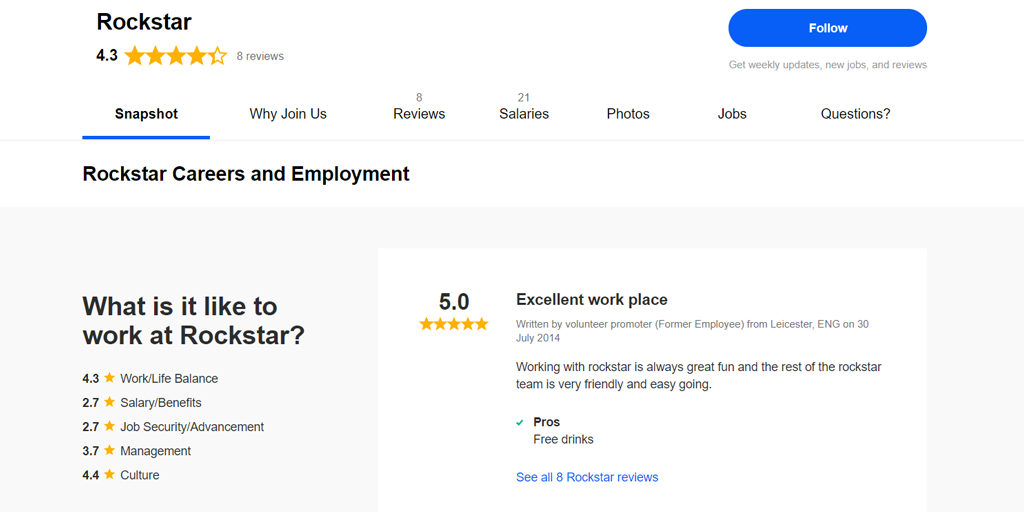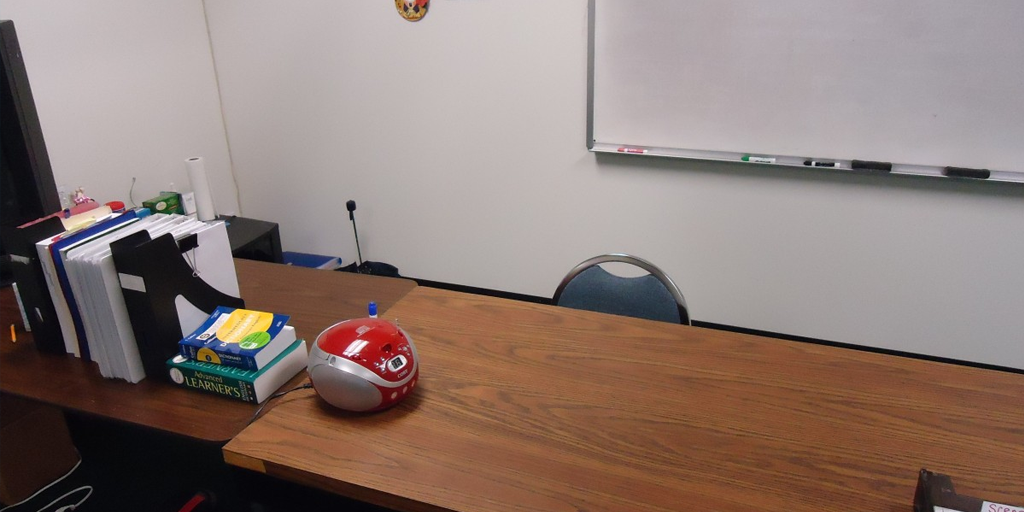
Offboarding a team member is never easy.
Relationships aside, the logistics of making sure that the ex-employee isn’t a security risk, their old tasks are accounted for and covered, and that there will be someone to take their place (with the appropriate training) is a tall order to meet.
That’s why this post will show you everything you need to know about offboarding an employee, including:
- Why offboarding is important
- How to effectively (and safely) offboard an employee
- How to make opportunities out of them leaving
I’ll even throw in some free templates you can follow to make sure that your offboarding goes right every time.
Want an offboarding process? We’ve got you covered
Before we dive into the meat of what offboarding is, why it’s important, and how to carry it out, I know that some of you will already know all of this information.
I know what it’s like to wade through a post to get to the good stuff. It’s awful.
That’s why I’ll skip right ahead and offer you our free premade offboarding template to use right now.
Use this process for free to effectively offboarding an employee no matter who is assigned to the task. Plus, if you’re not satisfied with the process as is, you can always edit it to your needs after importing it to your own Process Street account.
Now that that’s out of the way, let’s get stuck in!
Why is offboarding important?
The employee is leaving your company. They might have had the time of their life or a trying time due to bad role fit, differing company culture or other problems outside of your control.
Either way, they’re leaving, so you shouldn’t have to worry too much about their exit, right?
Wrong.
For one thing, new applicants will look for reviews of your company from previous employees in order to get a sense of the place they’re applying to. If they don’t like what they see, chances are you won’t get the best applicants for the role.
This is one of the core functions of offboarding – to make sure that the person leaving had the best impression possible before they make the final transition.

One of the best ways to do this is by listening to their grievances and any problems they had which contributed to their departure. This lets them know that you actually care about their opinion while giving you actionable ways to improve your existing company structure and culture.
If they felt isolated you might need to have more regular meetings with your team and give regular feedback on their successes and failures. Keep them in the loop to make sure that they know why the work they’re doing is important.
If they felt ill-prepared for the tasks assigned to them, maybe it’s time to look into training courses and programs that you can provide to help get your other team members up to speed.
Then there’s the security risk that ex-employees pose. This isn’t Men In Black – you can’t force them to forget any sensitive information from their time with you.
Instead, you need to make sure that your offboarding process has sufficient measures to recover sensitive materials, remove access to internal procedures and information and, if necessary, provide an NDA for the employee to sign.
Need more reasons? How about the simple truth that ex-employees always have the chance to come back at a later date and re-apply?
If you’ve offboarded an employee properly they should have a solid opinion on your team and be more likely to rejoin at a later date. In turn, this can save you massively in onboarding costs, as they will already be comfortable with your company culture and some of your internal processes.
Finally, there’s the good old-fashioned statistic of how many employees plan to leave your organization. It’s not a nice figure but we’d be fools to ignore it.
The 2018 Deloitte Millennial Survey showed that 43% of millennials and 61% of Gen Z respondents were looking to leave their job within the next 2 years. Combine that with their definition of the combined generations spanning 18-35-year-olds, and any company worth its salt would do well to pay attention to the practice of offboarding.
If all that doesn’t convince you the value of a thorough and standardized offboarding process, I don’t know what will.
Why do people leave?
While it’s usually better for the company for an employee to stay than leave, finding out the reasons for them doing so can be vital in making sure that their departure is an isolated event.
If there’s a systemic problem in the way your company is structured or treats its workers, the last thing you want to do is find that out through high employee turnover rates and skyrocketing onboarding costs.
That’s why one of the vital parts of offboarding is to find out why the employee is leaving in the first place.
There are a few ways you can do this:
- Ask them in their offboarding interview
- Provide a survey to them as soon as they let you know that they’re leaving
While a survey can often get the job done, it’s better to speak to the employee directly to try to get to the heart of the matter. However, depending on the employee there’s always the chance that speaking in person will make them feel pressured into responding in an untruthful way.
That’s why you need to employ both techniques.
As for the reason why they leave, there are a few common culprits:
- Feeling unappreciated
- Business and personal goals clashing
- Work relationships (bad culture fit, clashing personalities, etc)
- Romantic relationships (moving to be with someone, etc)
- Friends quitting
- Burnout (they feel overworked)
- Being bored/unchallenged by their work
- Lack of room to grow
- Lack of meaningful work
- Lack of recognition

Now, this isn’t a post about employee retention, so I won’t go into too much detail on what to do with this information once you have it.
However, if you begin to notice a trend among the responses of employees who leave, chances are that you have a problem on your hands which needs immediate attention.
Hell, even if one employee leaves it’s worth looking into the situation surrounding the reason they gave. That way you can avoid others succumbing to the same issues and forcing an entirely fresh hiring drive.
The offboarding process
Deal with the change quickly
As soon as you know that a team member is resigning you need to start taking action. The longer you take, the more damage will be done to your relationship with them.
Thankfully, this first stage is fairly simple to carry out and mostly focused on letting all relevant parties know about their departure.
This includes:
- The rest of their team
- Any clients they were primarily working with
- The HR department (who should, in turn, tell payroll and IT)
- Shareholders (depending on how senior the employee was)
You don’t have to tell all of these parties why the employee is leaving (telling clients is almost always never necessary) but if you don’t at least reach out and inform them then it’s all too easy for work rumors to spread.
One final tip in your communications is to wish the departing employee well in your announcements to show that there is no ill-will towards them and give a good impression to the rest of your team.
Get the paperwork sorted
Once you’ve informed everyone of their departure it’s time to get stuck into preparing the paperwork.
This includes:
- Formal resignation or termination letter(s)
- Final paycheck
- Testimonials for the employee
- NDAs
- Benefits plans, retirement plan details, and so on
There’s not much to say about the nuance of each piece here (all are self-explanatory) but all are vital to make sure the offboarding process goes smoothly for both you and the employee.
For example, a final resignation (or termination) letter on record will provide evidence of the date of their departure should the need arise to reference that in the future. Calculating their final paycheck in advance will make sure that they’re paid what they’re owed with less room for error.

Similarly, preparing any relevant NDAs as soon as you know that the employee is leaving (if you don’t already have one prepared) is an absolute must for any position with access to sensitive information.
Whether you’re on good or bad terms with the employee, you need to protect the business going on without them.
Ensure all work and knowledge is handed over
There will always be a dip in the productivity of your team after one of its members leaves. The vital part is making sure that you know precisely what’s getting done, what isn’t, and are able to prioritize the work for others to take over.
Oh, and whoever takes over needs to be as well-equipped as possible to deal with the new tasks assigned to them.
In other words, you need to:
- Record the tasks/routine of the employee
- Log any information they used for their duties (and the access points for them)
- Ensure that their replacement (if necessary) will have access to these routines and access points to let them see how the role was being performed
- Consider having the old employee train their replacement as part of their last month or so with you
- Know which contacts and clients outside of your organization you’ll need to notify of the departure and begin to take over the relationship with them (where possible and relevant)
If you’re unsure of whether you’ll be able to get a replacement employee for them before they leave, it’s also worth recording which of their duties were vital and so need to be continued by one of your existing team members. It’s not ideal but it’s better than leaving critical tasks for however long your hiring process may take.
Perform an exit interview
The exit interview is by far the best way to gather feedback about your organization, what works well, what needs improvement, and generally anything that could help you to prevent other employees feeling the need to quit.
The questions you should ask will largely depend on your specific internal processes and the role of the employee. However, here are a few examples:
- Was there anything that prevented you from carrying out your job effectively?
- What could we have provided to mitigate those problems? (Resources, training, etc)
- Do you feel like you were managed effectively?
- How are your relationships with the rest of the team?
- If you could choose one thing, what’s the biggest thing we could improve?
- Would you recommend this company to friends to work for? Why?
Try to take notes or (preferably) record the exit interview so that you can take action on anything they identify as needing improvement. Furthermore, when talking about their relationships with the rest of the team you might be able to spot some internal friction before it hits hard and another of your team quits.
Don’t ignore the warning signs – use their feedback to improve wherever you can.
Recover assets
While it’s sad to see one of your team go, it’s equally important to make sure that any company assets are recovered and accounted for. After all, the last thing you’d want to happen is to part on bad terms with someone but leave them with the materials to steal $30,000 from you.
This will entirely depend on the resources you originally provided them with, but could typically include:
- Subscription services
- Site logins (with company accounts)
- Credit cards
- Keys
- Materials
- Uniforms
- Computers
- Stationary

If they don’t have everything that you provided them with, you should also ask them to pay to replace what’s missing. Alternatively, you may be able to ask for the value of the items instead for you to buy another fresh set.
Confirm contact details
Even if someone leaves, that doesn’t mean that they’re gone forever. Heck, it doesn’t even mean that they won’t be useful to you in the future.
By confirming the contact details of the ex-employee going forwards you’re essentially keeping part of your network alive. The work you’ve put into listening to their grievances and maintaining a good relationship could generate new candidates from their list of contacts, and there’s always the chance that they’ll reapply later down the line.
One great way to keep in touch is to add them to your LinkedIn network. That way you can keep an eye on how they’re doing and whether there are any opportunities to have in contacting them when they settle into their new role.
You never know – you might be able to work with another company due to your new mutual contact.
Have a final farewell
It’s time for your team member to leave but that doesn’t mean you should let the opportunity pass to celebrate their time with you.
For the most basic of gestures, you can get their team to sign a farewell card for them and perhaps get a small gift. At the very least this will show them that their time there was valued, however short or long that may have been.
Ideally, you should be able to arrange a social hangout, a meal, or even a time to meet up and have a few drinks to have a proper farewell celebration. I know how awkward workplace gatherings can be but if you set up a casual event then it won’t matter too much whether everyone turns up or not.
The employee shouldn’t be forced to attend either. Even if they’re not there, a small get-together can be a great boost for morale, and doing so after a team member leaves can be another great way to smooth the transition of them no longer being there.
Key problems to consider (and free templates to solve them)
You know what offboarding is. You know why it’s important. You even know how to carry it out.
Sadly, none of that matters unless the entire process is documented.
Without the ability to track your offboarding and reliably carry it out the same way every time, you have no way of knowing how well employees are being offboarded or even if everyone is having the same measures applied to them.
Remember everything I said about how important offboarding is and the problems that not doing it beings? Yeah, those will all apply if you don’t follow a documented process. Worse still, you won’t be able to track when the issues hit because you’ll have no records of the process altogether!
That’s where Process Street comes in.
Process Street makes it easy to document, run, and track your regular processes. These processes can contain rich text, images, videos, and more to help users complete the checklist to the best of their ability every time.
Combined with customizable user permissions, integrations, and a whole host of other powerful features, Process Street is the best way to document, track, and standardize your operations. If you’re still not convinced, why not try out one of our free premade templates for employee offboarding below?
Do you have any tips or nightmare stories of offboarding gone wrong? I’d love to hear them in the comments below!







 Workflows
Workflows Projects
Projects Data Sets
Data Sets Forms
Forms Pages
Pages Automations
Automations Analytics
Analytics Apps
Apps Integrations
Integrations
 Property management
Property management
 Human resources
Human resources
 Customer management
Customer management
 Information technology
Information technology



Ben Mulholland
Ben Mulholland is an Editor at Process Street, and winds down with a casual article or two on Mulholland Writing. Find him on Twitter here.